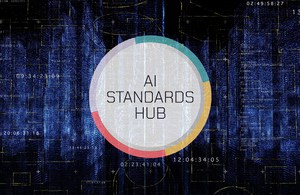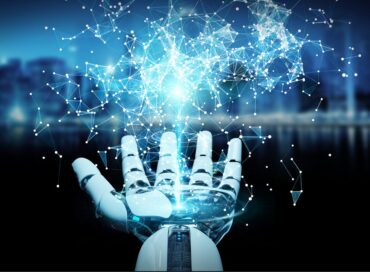
AI frees up designers so they can pursue and invent new and better designs for clients, which ultimately improves the overall chance of business success.
The rising impact of AI in web design is a blessing of the data-driven environment in the industries today. According to statistics, normal users are producing 2.5 quintillion bytes of data on a daily basis. Add this to the study that reveals that in 2020 each user would be creating 1.7 megabytes of data every second, and you have the perfect fostering environment for AI in web design.
The application of AI has long since prevailed and assisted the business owners in interpreting big data. The insights obtained from these programs provide better and personalized experiences to the consumers. The role of artificial intelligence AI in web design and development is a lot like this practice.
See also: MIT Researchers Develop AI System That Defers to a Human Collaborator
The application of machine learning and artificial intelligence in web development and design mostly adheres to the big data-based insight generated by analytical algorithms. The program analyzes various factors such as location, web footprint, time spent on a site, etc. Once the report is generated, Artificial Design intelligence produces a design from the selection of popular trends within a short amount of time.
Enhancing UX Design from the Beginning
Chatbots are one of the most famous applications of AI in enhancing UX. The streamlined approach has taken web engagement to the next level. And even though this is an old enough feature, the use of NLP gives it the much-needed boost to enhance the site functionality.
Eliminating the preprogrammed chatbots that depended on some fixed conversational scenarios, the new chatbots, using a natural language processing, do not follow a scripted path of the conversation. Rather, these bots depend heavily on learning as time passes, collecting conversation and query data, and enhancing the interaction quality based on that.
Another additional impact of AI in web design is the use of it to reduce redundant action. Various web design agencies in New York and other bigger cities are using AI-based UX design tools to conduct time-consuming tasks that were previously done manually. This speeds up the process and removes any bottlenecks from the entire operation.
The Positive Effect of AI On CX
The operational, as well as growth benefits of machine learning and artificial intelligence in web development, have been staggering so far. This report on AI-enhanced CX states that almost 24% of responders agreed that the company employs AI to get insight into the clients and make alterations to improve the experience with the organization.
The utilization of AI to improve the experience and engage more consumers is pretty apparent from Knorr’s AI-based food profiling. The personality quiz-like feature categorized the consumers into 12 different kinds of food profiles and generated the perfect recipe for them. The end goal of this AI-driven design is to get more consumers to engage with them and buy more Knorr products.
The instant and automated report generation elevates the decision-making and CX improving process a lot easier for the organizations, immediately rolling out the kind of feature or interface the users want. With AI in website design, organizations can secure the loyalty and advocacy of the consumers without any issue.
AI Designer: Next Step in Automation Trend
Despite being at a somewhat theoretical stage, with only a few examples of AI design platforms in web design, the possibility of AI to supplant human designers is one of the most controversial matters in hand. Taking the data analysis and helping to generate design to the next level, the ADI assistants can generate the site all by itself, with zero human intervention.
The design of web pages with an artificial designer is a different approach compared to the other options, i.e., the template-based web design and hiring professionals. And despite the sudden increase in fame, this application of artificial intelligence in web development& design is still far from reaching its ultimate mark.
The Grid AI web-builder is one of the examples of ultimate failure to reach the ambitious approach towards web designing. The company began way back in 2010, crowdfunding almost $6 million by 61,000 founding members. However, in 2019, the company took down all the customer websites and sent a landing page message that V3 is coming next. But there were no release dates.
While The Grid tried to launch an entire web design platform run only by the AI, the other contemporaries, such as Wix and Bookmark, are implementing AI in website design successfully, helping the users to create sites in a fast and functional way.
A Threat to Designers?
The accelerated growth in AI-driven design is seen as a direct threat to the designers, and this is the sector that is being discussed the most. Despite the bright and fast burning of life of The Grid, the further successful implementation of ADI in ready to go design platforms does increase the chance that this software will one day control a bigger share of the market.
However, specialists believe that even though AI may take over the design world, it cannot dominate. The domain of creativity remains with human consciousness. And though the AI design will be able to better control the rules and best practice part of the design, when it comes to creating off the shelf or out of the box interfaces, it will be the human designers who will be most needed.
AI Impact on Web Design: Just an Inconsequential Hoax?
The impact of AI in our daily lives is apparent, and just like that, its effect on web design is prominent as well. The AI impact on design is still considered to be inconsequential. But web design agencies are utilizing these tools to enhance the operation of creating functional sites. Putting the load of manual and tedious tasks on ADI, the designers are free enough to pursue and invent newer and better designs for the clients, which ultimately improves the overall chance of business success.





























